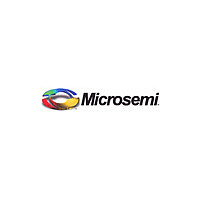ml4870 Microsemi Corporation, ml4870 Datasheet - Page 5

ml4870
Manufacturer Part Number
ml4870
Description
High Current Boost Regulator With Load Disconnect
Manufacturer
Microsemi Corporation
Datasheet
1.ML4870.pdf
(8 pages)
Available stocks
Company
Part Number
Manufacturer
Quantity
Price
Part Number:
ml4870-5
Manufacturer:
MICROLINEAR
Quantity:
20 000
FUNCTIONAL DESCRIPTION
The ML4870 combines a unique form of current mode
control with a synchronous rectifier to create a boost
converter that can deliver high currents while maintaining
high efficiency. Current mode control allows the use of a
very small high frequency inductor and output capacitor.
Synchronous rectification replaces the conventional
external Schottky diode with an on-chip P-channel
MOSFET to reduce losses, eliminate an external
component, and provide the means for load disconnect.
Also included on-chip are an N-channel MOSFET main
switch and current sense resistor.
REGULATOR OPERATION
The ML4870 is a variable frequency, current mode
switching regulator. Its unique control scheme converts
efficiently over more than three decades of load current.
A block diagram of the boost converter including the key
external components is shown in Figure 2.
Error amp A3 converts deviations in the desired output
voltage to a small current, I
measured through a current sense resistor (R
is amplified by A1. The boost control block matches the
average inductor current to a multiple of the I
by switching Q1 on and off. The peak inductor current is
limited by the controller to about 1.3A.
At light loads, I
inductor discharge cycle , causing Q1 to stop switching.
Depending on the load, this idle time can extend to
tenths of seconds. When the circuit is not switching, only
25µA of supply current is drawn from the output. This
allows the part to remain efficient even when the load
current drops below 250µA.
Amplifier A2 and the PMOS transistor Q2 work together
to form a low drop diode. When transistor Q1 turns off,
the current flowing in the inductor causes V
As the voltage on V
allows the PMOS transistor Q2 to turn on. In
discontinuous operation, (where I
A2 uses the resistive drop across the PMOS switch Q2 to
sense zero inductor current and turns the PMOS switch
off. In continuous operation, the PMOS turn off point is
independent of A2 and is determined by the boost
control circuitry.
Typical inductor current and voltage waveforms are
shown in Figure 3.
SHUTDOWN
The ML4870 output can be shut down by pulling the
SHDN pin high (to V
regulator stops switching, the control circuitry is powered
down, and the body diode of the PMOS synchronous
rectifier is disconnected from the output. By switching
Q1, Q2, and Q3 off, the load is isolated from the input.
This allows the output voltage to be independent of the
input while in shutdown.
SET
will momentarily reach zero after an
L2
IN
rises above V
). When SHDN is high, the
SET
. The inductor current is
L
always returns to zero),
OUT
, amplifier A2
L2
SENSE
SET
to go high.
) which
current
DESIGN CONSIDERATIONS
OUTPUT CURRENT CAPABILITY
The maximum current available at the output of the
regulator is related to the maximum inductor current by
the ratio of the input to output voltage and the conversion
efficiency. The maximum inductor current is limited by
the boost converter to about 1A. The conversion
efficiency is determined mainly by the internal switches
as well as the external components, but can be
estimated at about 80%. The maximum output current
can be estimated by using the typical performance
curves shown in Figures 4 and 5, or by calculation using
the following equations:
Since the maximum output current is based on when the
inductor current goes into current limit, it is not
recommended to operate the ML4870 at the maximum
output current continuously. Applications that have high
transient load currents should be evaluated under worst
case conditions to determine suitability.
INDUCTOR SELECTION
The ML4870 is able to operate over a wide range of
inductor values. A value of 10µH is a good choice, but
any value between 5µH and 33µH is acceptable. As the
inductor value changes, the control circuitry will
automatically adjust to keep the inductor current under
control. Choosing an inductance value of less than 10µH
will reduce the component’s footprint, but the efficiency
and maximum output current may drop.
It is important to use an inductor that is rated to handle
1.5A peak currents without saturating. Also look for an
inductor with low winding resistance. A good rule of
thumb is to allow 5 to 10m
inductance.
The final selection of the inductor will be based on trade-
offs between size, cost and efficiency. Inductor tolerance,
core and copper loss will vary with the type of inductor
selected and should be evaluated with a ML4870 under
worst case conditions to determine its suitability.
Several manufacturers supply standard inductance values
in surface mount packages:
I
I
Coilcraft
Coiltronics (561) 241-7876
Dale
Sumida
OUT V
OUT
(
( .
5
3 3
)
V
)
=
=
0 972
0 81
.
.
(847) 639-6400
(605) 665-9301
(847) 956-0666
™
™
V
V
IN MIN
IN MIN
3 3
5
.
(
(
V
V
)
of resistance for each 1µH of
)
-
-
0 144
0144
.
.
A
A
ML4870
(1)
(2)
5









